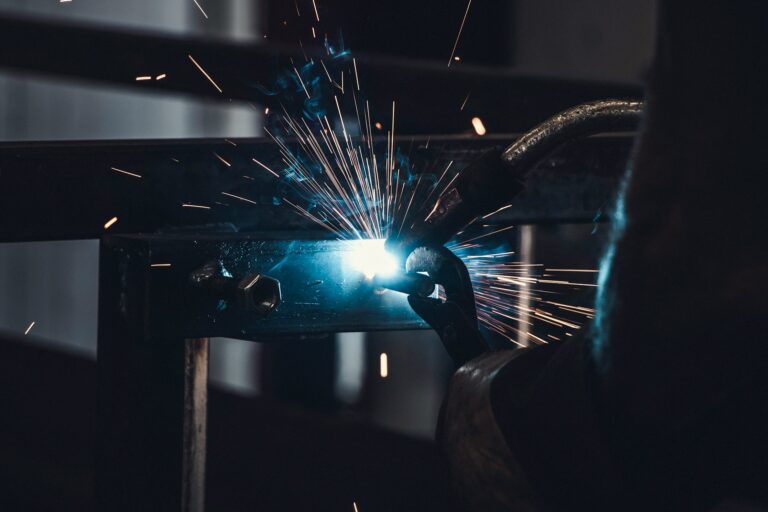Welding has come a long way from its traditional roots, evolving into a highly sophisticated field powered by cutting-edge advancements.
Whether you’re a professional fabricator or simply curious about the industry, understanding modern welding technology can offer insights into how industries are pushing the boundaries of durability, efficiency, and precision.
This blog dives into the remarkable innovations shaping the welding landscape and their implications for different industries.
Why Welding Technology Matters
Welding is more than just fusing metals. It plays a critical role in infrastructure development, automobile manufacturing, aerospace engineering, and much more. With industries placing greater emphasis on efficiency, safety, and precision, the demand for advanced welding solutions continues to grow.
These technological leaps are not just improving outcomes; they are reshaping the entire fabrication process.
Cutting-Edge Welding Techniques
Advancements in welding are making age-old methods more efficient and precise while introducing entirely new approaches.
1. Laser Welding
Laser welding is revolutionizing industries by offering unparalleled precision and minimal heat distortion. This advanced welding method uses high-powered lasers to weld intricate joints with speed and accuracy.
Industries like automotive and aerospace have embraced this technology to manufacture high-performance components.
Benefits of Laser Welding
- Reduced heat-affected zones, minimizing material deformation
- Ideal for welding thin or delicate metals
- Faster processing speeds
2. Friction Stir Welding (FSW)
Friction Stir Welding is another game-changer, especially for materials like aluminum and other non-ferrous metals. Unlike traditional methods, FSW avoids melting the metals, producing joints with superior strength and quality.
Applications of Friction Stir Welding
- Shipbuilding, where light yet durable constructions are crucial
- Automotive parts, with a focus on lightweight aluminum components
- Aerospace manufacturing, where material integrity is paramount
3. Robotic Welding
Robotic welding has skyrocketed in popularity, especially in industries that demand both speed and accuracy. By integrating robotics with AI, manufacturers can now complete complex welding tasks autonomously.
Key Advantages of Robotic Welding
- Increased production efficiency
- Enhanced precision in repetitive tasks
- Reduction in workplace hazards and human fatigue
With robotics and AI working hand-in-hand, robotic welding represents the pinnacle of advanced welding technology in contemporary manufacturing.
Innovations Impacting Fabrication Tools
Technological advancements are not just confined to welding techniques; they also extend to fabrication tools. From multi-functional handheld tools to automated monitoring systems, these innovations are changing the way projects are executed.
1. Smart Welding Helmets
Smart welding helmets equipped with augmented reality (AR) are making life easier for welders. These helmets offer real-time data projection, enhancing both precision and efficiency.
Features of Smart Helmets
- Auto-darkening lens technology for optimal comfort and protection
- Integration with AR for overlayed welding guides
- Real-time feedback on welding speed and technique
2. IoT-Integrated Weld Monitoring Systems
IoT is playing a significant role in advancing fabrication tools. Weld monitoring systems now come equipped with sensors that track and log parameters like temperature, voltage, and material alignment.
Benefits of IoT Integration
- Better quality control of welds
- Ability to troubleshoot issues remotely
- Reduced downtime through predictive maintenance
3. Portable and Multi-Functional Welding Machines
Modern welding machines are evolving to become more compact and versatile, catering to on-the-go operations without compromising power or functionality. These tools allow workers to adapt quickly to different materials and environments.
The Way Forward With AI and Machine Learning
Artificial Intelligence (AI) and Machine Learning (ML) are rapidly transforming welding as we know it. From predictive analysis that minimizes defects to real-time monitoring systems, AI-driven welding technology is setting new standards.
AI-Driven Welding Platforms
AI platforms collect and analyze data from welding processes, offering actionable insights to optimize techniques and reduce waste. For instance, these systems can predict equipment failures before they occur, ensuring uninterrupted work cycles.
The Role of Machine Learning in Welding
Machine Learning takes this a step further by continuously improving systems through data. Fabrication tools equipped with ML capabilities can adapt to specific materials and environments, delivering superior results consistently.
Why Businesses Should Keep Up
With industries becoming more competitive, adopting innovative welding solutions offers distinct advantages. Businesses can achieve increased output, lowered costs, and unparalleled product quality.
Whether it’s laser welding for precision manufacturing or IoT-enabled tools for real-time monitoring, staying updated is an investment in future-proofing operations.
If you’re an industry professional or fabricator, it’s the perfect time to learn more about these advanced welding technologies. Not only will they differentiate your work, but they’ll also prepare your business for the next wave of industrial innovation.
Final Thoughts
The latest advancements in welding technology are more than just trends; they represent a fundamental shift in how industries operate. By adopting techniques like laser welding and utilizing smart fabrication tools powered by AI and IoT, businesses can unlock unprecedented levels of efficiency and precision.


